Images of Giants and Titans
Giants and Titans
Here in (Figure 1) from an Indian temple In which you can see a dramatic size difference between a normal-size human and a giant. Lokk at the lions to the left and the right, whether fact or fiction from our perspective the artist’s intent was to portray the image of a giant. In this picture you can also see a lesser giant on the side, but a giant none the less. Giants and Titans
In (figure 2) you can see multiple body types and the one in the back is larger, and the one sitting is larger still. The artist’s intent is to portray a giant-sized being.
Giants and Titans
(In Figure 3) Is a large right shoe print of giant size, if anyone knows the location and a story or article on this track please email or post your findings here.
*
*
In (figure 4) Notice the dramatic size difference between figure to the right an the same plane as the tiny figure at the bottom right, the artist’s intent is to illustrate a giant. Without the reference no height could be determined by the artist for communicative purposes the smaller person is included in the artists frame of reference.
*
*
In (figure 5) you see a similar size ratio; smaller figures, two giant size warriors and a titan seated.
(Figure 6) Here you can see two kings, two very important people of status the smaller one has to use two hands to support the object while the giant-sized one holds it high with one hand. Also notice the relaxed stance of the larger one leaning away from the object while the other is weighted forward. I do not think this is a comparison of a giant to a human but is a comparison of one giant to a larger ancestor.
In (figure 7) You can see the common people on the left. In the center is the Pharaoh, a massive giant two and a half stories tall. This would indicate a very early linea. Look and compare the staff of the Pharaoh to size of the average person.
Here in (Figure 8) is a closeup. In the light of greater ancestry the whole of megalithic building comes together an corresponds with the anthropological findings.
Here again you can see the juxtaposition of size in (Figure 9) of the Titan and the common people.
*
*
*
*
*
*
*
*
In (Figure 10) You can see the head in the hands compared to the head of the man holding it. Some might say that “this could be a head shrunken down” ., I think the rounded face of the giant and the deliberate sculpting of the small face as being overly flat was a way that the artist thought that might be the mindset of any one who saw this sculpture. So the artist flattened out the face to illustrate in a dramatic way that this is not a shrunken head, there is no pronouncement of the features .
In (Figure 11) the titanic architect measures a large pole, one very important aspect of this image is to notice what is in his left hand and what is underneath his right hand, . . . two more poles, and one holds of the flooring for two people. The artists intent was made as clear as it could be made by actually holding and illustrating several poles lined up to his personage.
Here (Figure 12) you see a giant with two smaller size women. The features are very pronounced, the eyes and nose showing rather healthy looking appearance. There is a low neotonous chin and top of the head which is characteristic of people from India.
All the above interpretations of these reliefs and images follow a well defined pattern, that may be up to a different interpretation, however this pattern is so far reaching: “greater ancestry” that it stands as so dominant in human history as to be only called factual.
~Chris L Lesley
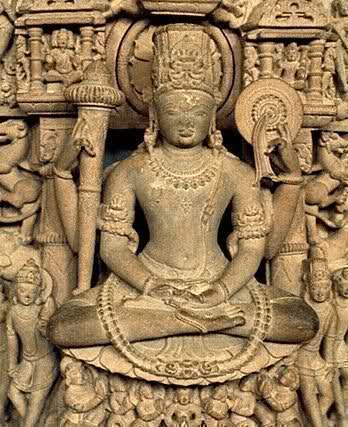
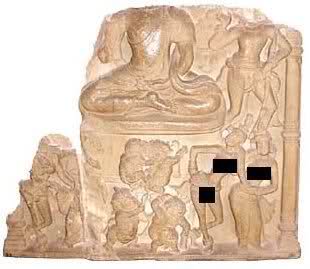
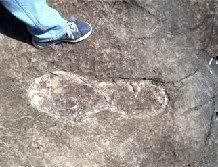

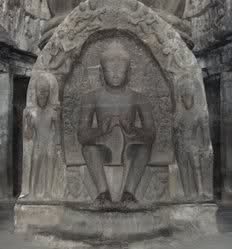
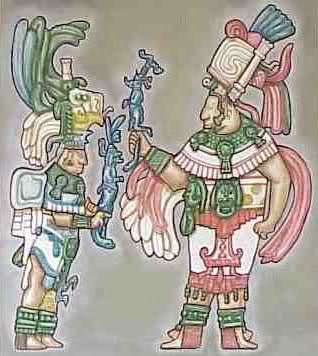
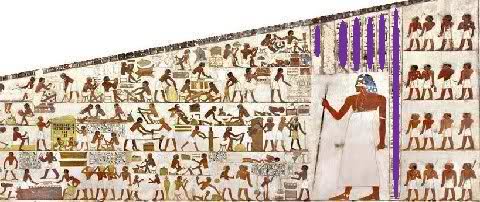
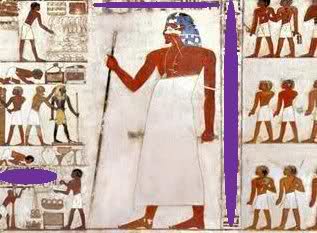
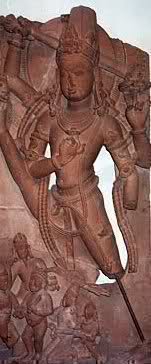



What do you know about them being the Demons of the Old Testament, Lucifers fallen angels, who gave birth to Giants via the daughters of EVE?
Rhonda, You can find this type of information on the greaterancestors/facebook page. However, humans, true were also larger depending on the level of maturity they reached.
The consistent view of early Christianity was that the demons are the spirits of the dead Nephilim – the offspring of the angels and human women.
Great info here Chris!
Yes, this is true, i hold to this view.
Read about the “Book of Enoch” and “Epic Of Gelgamesh”3000 years before bible but same stories!
Jerry, there are more than one “history’s”. The “progressive” government approved history: which contradicts evidence and written human history, this is a history I do not ascribe to. Many people follow Sitchin’s work. . . I do not. The book of Genesis is made up of 5 books which have titles at their closing “This is the book of Heaven and Earth”, This is the book of Adam” and so on. These were authored by Moses as they were recalled by GOD. No book is older than these they were first. We unfortunately have deconstructionists feeding us antibiblical information. I was taught these same untruths in my education, I now reject it. I do and have read Gilgamesh and the book of Enoch (which came later and are not part of the Canon of Scripture) However, I do think these books are important historical documents and I do encourage reading them.
thank you for summarizing that, i too believe thier are a great many trying to nullify the Bible nad there is only one reason for that and that of course is in the Bible itself.
Chris…your work, time and studies are absolutely fascinating!!! The Lord has blessed you with an amazing “Watchers-Gift” in these end-times!!! You can now count me as a new student of your works and studies!!! I look forward to your continued interview with L.A. next Thursday night!!! May the Lord bless you and keep you always…Look forward to shaking your hand in the clouds of Glory soon!!! Your Sister in Christ Jesus, Kasie
Thank you, i don’t plan on retiring any time soon. Maybe a “Nephilim Survival Guide” is in order.
That would be awesome!!!! Look forward to the read!!! God Bless!!!!
Questions? In regards to the study guide…how, and why would we need one as followers of Christ? Do you believe these species will be more of an invasion during the tribulation…or is this something we might be facing pre-rapture…or are we already there? Is it something we as believers should be praying about, in regards to
1 Corinthians 12: 10 ….The gift of discerning spirits…I guess my main question is, what (as believers) do we face here in the coming days? Thanks again Dear Brother, Kasie
We are learning more and more by independent researchers like myself more and more of the history of the Nephilim. They speak of “Red-hair” giants, its important not to curse our societies by blaming an innocent Jewish lineage. Reemember: “I will curse those that curse you, and bless those that bless you,” The Nephilim are not present today, in the meantime mankind is devolving, the genetic load is increasing as we weaken in every way a new strain of “Great Giants” would be unstoppable. Mankind in pre-flood did not have to contend with the “Great Giants” much because these waged wars against their angelic fathers. The first defense would be to convince them to do the same. The first phase of their return will have to be the reconstitution of Cain’s lineage via “Neanderthal DNA”. As far as prophecy i avoid it like the plague, I have a gift for discerning the past from God but the future is completely clouded to me. No help there.
Also, Chris…could you explain your “Cain/Red Hair Theory” in more detail…or at least direct me in your research as to where I might find your explanation pertaining to that information? Much gratitude, Kasie
Kasie, there is a four part series on my Facebook fanpage in “NOTES”. I plan on putting it into a study manual with more detailed technical information. It will be on sale for 12.95 you will find it in the “gawm store” you can see it for free on facebook. There is also an article called “Two lineages of Redheads” It is important to remember that today’s redheads are not of Cain lineage but of Jewish descendancy. Today’s redheads are of no use to the Nephilim, as are any other races today.
Responding to your answer regarding the coming Neanderthals….Do you believe that this somehow ties into L.A.’s research where people of past and present who have been abducted and chipped…are being genetically changed by these chips, as part of fulfilling this coming lineage?…To quote the respected surgeon from the “Watchers 3” series, “These chips are changing their DNA.” Makes you think!!!
Kasie, my research doesn’t include undercover operations, only the past strategy pre-flood.
To Kasie Nickles comment, you misunderstand LA Marzulli’s points about the “chip”. He is not saying that chips as in semiconductors in our computers, but rather the hybrid race is passing their DNA to humans. This is all connected to demons and why we must pursue Righteousness and obey Christ to defend against them. Christ must be king in our lives, not just in our mouths.
hello chris, you can find an explanation about figure 3 on this website
http://s8int.com/phile/giants28.html